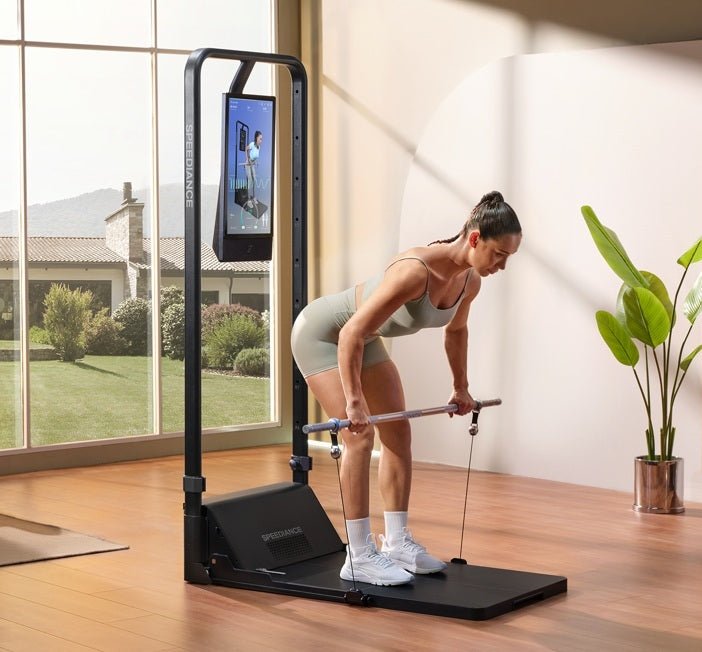

Living with chronic pain can feel like having an unwelcome guest who overstays their welcome. It turns simple things into major hurdles and can really wear you down. Whether it's a constantly aching back, joints that groan every morning, or just a widespread feeling of discomfort, the frustration is completely understandable. While things like medication and physio have their role, many people are finding that strength training is a surprisingly effective way to take back some control. When you do it right, building strength isn’t about gritting your teeth through pain; it’s about giving your body the support it needs, moving better, and gradually making the discomfort fade into the background.
Understanding Chronic Pain and How Strength Training Fits In
Basically, chronic pain is any pain that hangs around for three months or more. It’s not like a sprained ankle that gets better with time; it often sticks around. This can be from conditions like arthritis, fibromyalgia, or even just from sitting with bad posture for years. The natural reaction is often to stop moving, worried that you’ll only make it worse. But actually, the right kind of movement is often the best medicine. That’s where strength training comes in. It’s a way to actively strengthen the muscles that support your joints, get blood flowing to help with healing, and even get your body to release its own natural painkillers.
The Real-World Benefits of Getting Stronger
When you start a sensible strength programme, you’re not just building muscle—you’re building a body that’s better able to handle life. Here are some of the key pain reduction exercises and the difference they can make.
Stronger Muscles for Better Joint Support
Think of the muscles around a joint as its personal security team. If that team is weak, the joint takes all the pressure, which leads to pain. By making those muscles stronger, you give your joints the backup they need to work without strain. This is a game-changer for knees, hips, and the lower back. A smart system like the Speediance Gym Monster 2 is perfect for this because its digital resistance lets you build strength smoothly, without any jarring movements.
Low-Impact Workouts That Are Kind to Your Body
The thought of lifting heavy weights can be off-putting when you’re already in pain. The great thing is, low-impact workouts are a much safer bet. They focus on controlled movements that build strength without hammering your joints. This can be anything from bodyweight exercises to using resistance bands or machines. For a brilliant low-impact session that covers both cardio and strength, the Speediance VeloNix is designed to be gentle on your joints while giving your lower body a great workout.
Improved Mobility and Flexibility
Chronic pain often leads to a catch-22: it hurts to move, so you move less, which makes you even stiffer. Strength training helps you break out of that cycle by gently encouraging your joints to move through their natural range of motion. Exercises that work on your hip mobility, core stability, and shoulder movement can make a huge difference in how freely and confidently you move.
The Power of Endorphins
Working out isn’t just physical; it changes your brain chemistry for the better. Regular strength training tells your brain to release endorphins, which are basically natural pain relievers. They also lift your mood and help you deal with the stress that often comes with chronic pain, making it a key part of holistic chronic pain management.
The Best Strength Exercises for Common Pain Points
Focusing on the right areas can make all the difference.
For Knee and Hip Pain
-
Glute Bridges: These are amazing for your glutes and lower back, giving better support to your hips and spine.
-
Seated Leg Extensions: This move builds up your quads, the big muscles at the front of your thighs that act as shock absorbers for your knees.
-
Mini Squats: A shallow squat is a safe way to build stability around the knee without needing to go into a deep, painful position.
For Lower Back Pain Relief
A strong core is the best friend your lower back can have.
-
Planks: This move builds serious core endurance without putting much stress on your spine.
-
Pelvic Tilts: A gentle exercise that can ease stiffness and get your deep core muscles working.
-
Rowing: Using an accessory like the Rowing Bench is a fantastic way to strengthen your whole core and back with a smooth, rhythmic motion.
For Shoulder and Neck Pain
-
Seated Shoulder Presses: Doing this while sitting on an Adjustable Bench gives you lots of stability, so you can build shoulder strength safely.
-
Bicep Curls with Resistance Bands: A simple but effective way to keep your elbows and shoulders healthy.
-
Lat Pull-downs: A stronger upper back can do wonders for taking the strain off your neck and improving your posture.
Common Questions About Strength Training and Pain
Is it really safe to strength train if I have chronic pain?
Yes, it absolutely is. The trick is to do it the right way. Start slow, nail your form, and always listen to your body. Low-impact, controlled pain reduction exercises are not just safe; they're incredibly helpful.
What kind of training is best for sore joints?
Low-impact workouts with resistance you can easily adjust are your best bet. This is where digital resistance is great because you can make tiny changes to find the level that feels right for you.
How often should I be training?
Aiming for two or three short sessions a week is a perfect start. It’s more about being consistent than doing long workouts. As you feel stronger, you can always do more if you feel up to it.
